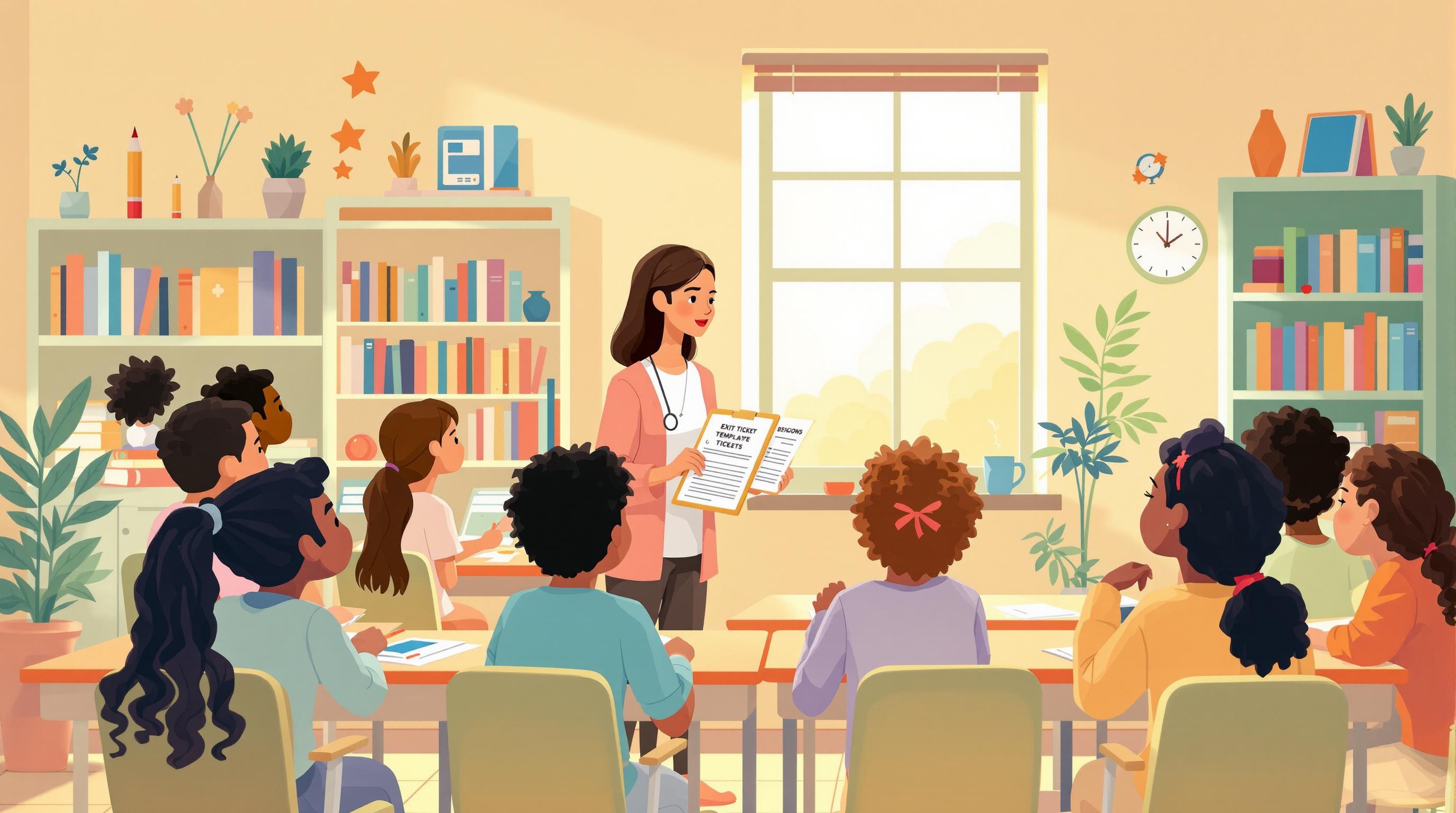The landscape of education is continually evolving, influenced by technological advancements and changing societal needs. Modern Teaching Aids have emerged as powerful tools that can enhance the learning experience, offering new ways to engage students and enrich traditional teaching methods. Integrating these aids into conventional classrooms is not just an option but a necessity to prepare students for the demands of the 21st century.
This comprehensive article explores the integration of Modern Teaching Aids into traditional teaching methods. It delves into the benefits, challenges, and strategies for effective implementation, aiming to provide educators with practical insights to enhance their teaching practices.
Understanding Traditional Teaching Methods
Overview of Traditional Teaching
Traditional teaching methods have been the backbone of education for centuries. These methods typically involve a teacher-centered approach, where the educator is the primary source of knowledge, and students are passive recipients. Common characteristics include:
- Lectures and Direct Instruction: Teachers deliver content verbally, often accompanied by textbooks or written notes.
- Rote Learning: Emphasis on memorization and repetition to instill knowledge.
- Standardized Assessments: Uniform tests to evaluate student understanding.
Benefits of Traditional Teaching
Despite criticisms, traditional teaching methods offer several advantages:
- Structured Learning Environment: Provides clear expectations and routines.
- Focus on Fundamental Skills: Prioritizes basic literacy and numeracy.
- Teacher Expertise: Leverages the teacher's knowledge and experience.
Limitations of Traditional Teaching
However, traditional methods also have notable limitations:
- Passive Learning: Limited student engagement and interaction.
- One-Size-Fits-All Approach: Does not account for diverse learning styles and needs.
- Lack of Real-World Application: Often disconnected from practical contexts.
Exploring Modern Teaching Aids
Defining Modern Teaching Aids
Modern Teaching Aids refer to tools and resources that utilize contemporary technology to facilitate and enhance learning. They encompass a wide range of materials, including:
- Digital Devices: Computers, tablets, and interactive whiteboards.
- Educational Software and Apps: Programs designed to support learning in specific subject areas.
- Multimedia Resources: Videos, animations, and virtual reality experiences.
- Online Platforms: Learning management systems and collaborative tools.
Benefits of Modern Teaching Aids
Modern Teaching Aids offer several benefits that address the limitations of traditional methods:
- Enhanced Engagement: Interactive tools capture students' attention and motivate learning.
- Personalized Learning: Adaptive technologies cater to individual learning styles and paces.
- Real-World Connections: Simulations and multimedia resources provide practical contexts.
- Collaborative Opportunities: Online platforms facilitate communication and teamwork.
Types of Modern Teaching Aids
1. Interactive Whiteboards
Interactive whiteboards replace traditional chalkboards, allowing teachers to display digital content, annotate in real-time, and engage students through interactive lessons.
2. Educational Software and Applications
Software programs and mobile apps offer interactive exercises, games, and tutorials in various subjects, enabling self-paced learning and immediate feedback.
3. Virtual Reality (VR) and Augmented Reality (AR)
VR and AR technologies immerse students in simulated environments, enhancing understanding through experiential learning.
4. Online Learning Platforms
Platforms like Moodle and Google Classroom provide spaces for resources sharing, assignments, and communication between teachers and students.
5. Multimedia Projectors
Projectors enable the display of videos, presentations, and images, enriching the visual aspect of lessons.
The Need for Integration
Bridging the Gap Between Traditional and Modern Education
Integrating Modern Teaching Aids into traditional teaching methods is essential for several reasons:
- Meeting Diverse Learning Needs: Modern aids support various learning styles, including visual, auditory, and kinesthetic learners.
- Enhancing Critical Thinking: Interactive tools encourage problem-solving and analytical skills.
- Preparing for the Future: Familiarity with technology is crucial in a digital world.
- Increasing Engagement: Modern aids make learning more enjoyable and relevant.
Challenges in Integration
Despite the benefits, integration faces obstacles:
- Resistance to Change: Teachers accustomed to traditional methods may be hesitant.
- Resource Constraints: Limited access to technology and funding.
- Technical Difficulties: Lack of infrastructure or technical support.
- Training Needs: Teachers require professional development to use new tools effectively.
Strategies for Integrating Modern Teaching Aids
1. Blended Learning Approaches
Blended learning combines traditional face-to-face instruction with online activities.
- Implementation: Assign online exercises to complement classroom teaching.
- Benefits: Provides flexibility and accommodates different learning paces.
- Example: Use an online platform for homework assignments while maintaining in-class lectures.
2. Incorporating Multimedia Presentations
Enhance lectures with multimedia elements.
- Implementation: Use slideshows with images, videos, and animations.
- Benefits: Visual aids can simplify complex concepts.
- Example: Include documentary clips in history lessons to bring events to life.
3. Interactive Classroom Activities
Use technology to create interactive experiences.
- Implementation: Employ educational games and quizzes using apps or websites.
- Benefits: Increases participation and retention.
- Example: Use Kahoot! for real-time quizzes that encourage friendly competition.
4. Collaborative Learning through Digital Platforms
Facilitate group work using online tools.
- Implementation: Assign projects where students collaborate via shared documents.
- Benefits: Develops teamwork and communication skills.
- Example: Use Google Docs for group essays, allowing simultaneous editing.
5. Flipped Classroom Model
Students learn new content at home and apply knowledge in class.
- Implementation: Provide video lectures for homework and use class time for discussions.
- Benefits: Maximizes classroom interaction and deepens understanding.
- Example: Assign a science video to watch at home, then conduct experiments in class.
6. Professional Development for Teachers
Invest in training educators.
- Implementation: Offer workshops and courses on using Modern Teaching Aids.
- Benefits: Builds confidence and competence in technology integration.
- Example: Schedule regular training sessions on new educational software.
7. Integrating Assessment Tools
Use technology for assessments.
- Implementation: Employ online quizzes and polls for formative assessment.
- Benefits: Provides immediate feedback and tracks progress.
- Example: Use platforms like Quizlet for vocabulary tests.
8. Leveraging Social Media
Use platforms to engage students.
- Implementation: Create class blogs or forums for discussions.
- Benefits: Encourages expression and critical thinking.
- Example: Use a private Facebook group for literature discussions.
9. Virtual Field Trips
Expand learning beyond the classroom.
- Implementation: Use VR to explore places virtually.
- Benefits: Provides experiences otherwise inaccessible.
- Example: Virtual tours of museums or historical sites.
10. Customized Learning Paths
Use adaptive software.
- Implementation: Assign programs that adjust difficulty based on performance.
- Benefits: Supports individual learning needs.
- Example: Math software that provides more practice on challenging concepts.
Case Studies of Successful Integration
Case Study 1: Enhancing Language Learning with Multimedia
A high school English teacher integrated Modern Teaching Aids by using multimedia presentations and online discussion boards.
- Outcome: Improved student engagement and higher test scores in comprehension.
Case Study 2: Science Classes Using Virtual Labs
A middle school implemented virtual labs to supplement hands-on experiments.
- Outcome: Allowed exploration of dangerous or costly experiments safely, enhancing understanding.
Case Study 3: Mathematics Through Educational Apps
Elementary teachers incorporated math apps into daily lessons.
- Outcome: Increased proficiency in basic math skills and higher student enthusiasm.
Overcoming Challenges
Addressing Resistance to Change
- Solution: Highlight benefits and provide support.
- Action Steps:Share success stories and evidence of effectiveness.Encourage peer collaboration and mentoring.
- Share success stories and evidence of effectiveness.
- Encourage peer collaboration and mentoring.
Ensuring Accessibility and Equity
- Solution: Strive for inclusive access.
- Action Steps:Seek funding or grants for technology.Utilize low-cost or free resources.
- Seek funding or grants for technology.
- Utilize low-cost or free resources.
Managing Technological Issues
- Solution: Prepare and maintain infrastructure.
- Action Steps:Establish technical support systems.Regularly update and maintain equipment.
- Establish technical support systems.
- Regularly update and maintain equipment.
Providing Adequate Training
- Solution: Invest in professional development.
- Action Steps:Organize training sessions.Encourage self-paced learning resources.
The Impact of Integration
Improved Student Engagement
- Observation: Interactive tools make lessons more interesting.
- Evidence: Studies show higher attendance and participation rates.
Enhanced Learning Outcomes
- Observation: Personalized learning leads to better understanding.
- Evidence: Test scores and assessments indicate improved performance.
Development of Digital Literacy
- Observation: Students gain essential technology skills.
- Evidence: Preparedness for future education and careers.
Fostering Critical Thinking and Creativity
- Observation: Modern Teaching Aids encourage exploration and innovation.
- Evidence: Increased project-based learning and problem-solving abilities.
Future of Education with Modern Teaching Aids
Evolving Role of Teachers
- From Knowledge Providers to Facilitators: Teachers guide learning experiences.
- Emphasis on Mentoring: Focus on supporting individual student growth.
Advances in Technology
- Artificial Intelligence: Personalized tutoring and support.
- Augmented Reality: Enhanced interactive learning environments.
- Global Collaboration: Connecting classrooms around the world.
Lifelong Learning
- Continuous Education: Technology enables ongoing skill development.
- Accessibility: Learning opportunities available anytime, anywhere.
Conclusion
Integrating Modern Teaching Aids into traditional teaching methods is a transformative approach that addresses the evolving needs of education. It enriches the learning experience by making it more engaging, personalized, and relevant to the digital age. While challenges exist, they can be overcome through strategic planning, investment in resources, and commitment to professional development.
Educators are encouraged to embrace this integration, leveraging the strengths of both traditional and modern methods to create a dynamic and effective educational environment. By doing so, they prepare students not only academically but also equip them with the skills necessary to navigate and succeed in an increasingly technological world.
Call to Action
For teachers and educational institutions looking to embark on this journey:
- Assess Your Current Methods: Identify areas where Modern Teaching Aids can enhance your teaching.
- Start Small: Integrate one or two new tools and gradually expand.
- Collaborate: Work with colleagues to share resources and strategies.
- Seek Support: Utilize professional development opportunities.
- Engage Students: Involve students in the process, seeking their input and feedback.
By taking these steps, you can effectively integrate Modern Teaching Aids into your teaching practices, enriching the educational experience for both you and your students.
References:
- Smith, J. (2020). Technology in Education: A Comprehensive Guide. Education Press.
- Johnson, L., & Adams Becker, S. (2019). The Horizon Report: Teaching with Technology. New Media Consortium.
- Davis, K. (2021). Blended Learning Strategies. Learning Innovations Journal, 15(3), 45-60.
- Thompson, R. (2018). Enhancing Student Engagement with Modern Teaching Aids. Journal of Educational Technology, 22(4), 77-89.


